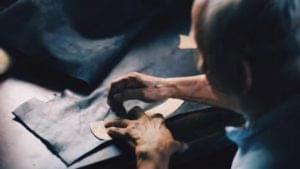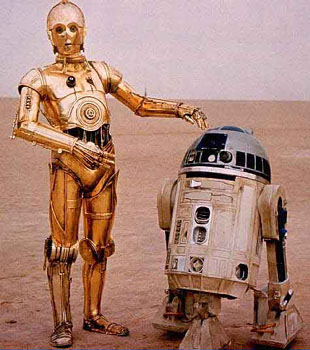
Early Thursday morning I attended a midnight opening night screening of ‘Star Wars: The Force Awakens‘.
It’s amazing to me to think that it was way back in February of 2013 that Disney announced there would be a new Star Wars film for the first time in a decade.
A long time ago…
Over the last ten years, poor ol’ George Lucas has been under the blazing ‘nerd blowtorch’ for those prequels – some of it probably justified. But while we might question some of his directorial and screenwriting decisions, there’s one thing that’s beyond question:
George Lucas was a brilliant visionary.
As designers, I think we can still learn a lot from George’s ability to research, to collect a bunch of weird and disparate inspirations and re-assemble them into a new, captivating and original whole. I want to touch on that ability today.
The Droids We’re Looking For
As much as Star Wars is a story about farmboy with wanderlust, the truth is that it’s two droids that drive the story in the first half ‘A New Hope’. In fact, we barely see a human for the first 20 minutes. It’s essentially a tin man and a rolling trash can in the desert – so if his robots can’t carry the story, the film dies. Why did he do this?
The Hidden Fortress
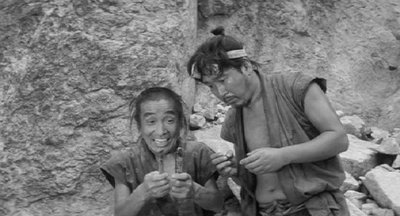
It’s well documented that Lucas borrowed large parts of the story of ‘A New Hope’ from Akira Kurosawa‘s The Hidden Fortress (1958).
That film begins with two squabbling peasants – a tall one and a short one – trekking through the wilderness to join a rebellion. The peasants are played mostly for their ‘three-stooges-like’ comic value, but we also see the story through their eyes.
‘The Hidden Fortress’ also includes a sassy, independent princess, a secret treasure and, yes… a hidden fortress. But Lucas knew the success of his two droids-peasants was critical to his story.
Designing C-3PO
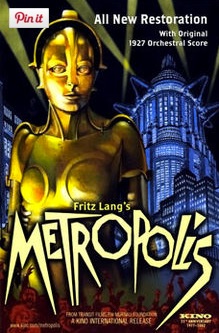
George Lucas’s golden droid was a very original blend of old and new ideas on what a robot should be. The visual design borrows from ‘Maria’ in Fritz Lang’s Metropolis (1927), probably the most famous robot in early cinema.
However, like most humanoid robots in 20th cinema, she is not to be trusted. In fact, 20th-century movies generally tell you that the more human a robot looks (or sounds), the more dangerous they are (WestWorld, Alien (Ash), Hal-9000).
If a robot was trustworthy, it had to be mechanical, monotone and determinedly non-human, like Robby the Robot in Forbidden Planet.
C-3PO was different – more like a blending of the Cowardly Lion’s fretting in the Tin Man’s body. Not a hero but certainly not a villain either. Somehow C-3PO managed to feel both completely original and instantly familiar at the same time. That’s hard to do.
Designing R2-D2
If C-3PO could perform a role mostly like a human character, R2-D2 was a much braver decision. This little tin can needs to help drive the story, even though he has:
- no eyes
- no facial expressions
- no understandable language
- not even shoulders to shrug to hands to throw up
On the surface, it’s like trying to get important plot exposition out of a coffee machine. It must have seemed a crazy decision for people arriving on the set.
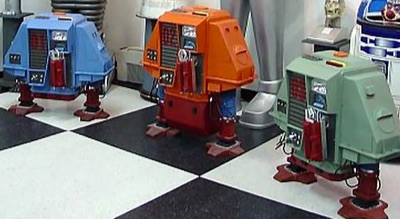
But two years earlier Lucas had seen a relatively little-known sci-fi film called ‘Silent Running (1972) that inspired him.
Silent Running is set in a dystopian future where Earth is a dead planet, but plant and animal life has been preserved in giant floating space domes (yes, Wall-E also draws from this film). Bruce Dern plays the part of ‘Freeman Lowell’, one of the men charged with maintaining these nature domes until life can be returned.
Lowell is aided by three small service ‘drones’ – Huey, Louie and Dewey – who become his main companions for the film.
Like R2-D2, these drones are short, faceless and very industrial looking, yet as Lowell teaches them to care for plants and even play poker, they show personality. Even though they couldn’t smile or frown or shake their fist, Lucas saw that they were still able to drive the story forward like a human character.
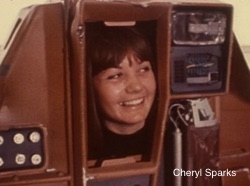
In fact, the drones were given life by four amputee actors – Mark Persons (Dewey), Cheryl Sparks and Steven Brown (Huey) and Larry Whisenhunt (Louie). Kenny Baker (R2-D2) must have drawn a lot from watching their performances.
Silent Running didn’t get a lot of attention at the time, but was a critical influence on George Lucas.
A Salute to George Lucas
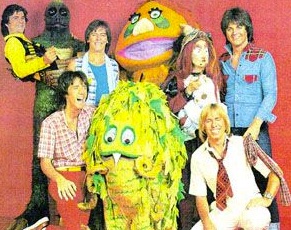
You probably only need to watch about 10 minutes of something like H.R. Pufnstuf or Sigmund and the Sea Monsters to get a feel for the contempt that kid’s fantasy entertainment was held in till the early 70’s. “They’re kids! Give ’em any ol’ garbage. Just paint it bright colors and they lap it up!” seemed to be the approach of producers. Cheap sets, tacky costumes, awful dialogue, and idiotic plots.
By contrast, Star Wars was smart, creative, intricately-planned and took the art of storytelling more seriously than any kid-friendly fantasy drama before it. It’s little wonder that people lost their tiny minds in 1977.
The bar was raised and movies were never the same again. Mr. George Lucas – I’ll be forever grateful to you for that.
Originally published in the SitePoint Design Newsletter.
Frequently Asked Questions about Designing Droids in Metropolis: Huey, Dewey, and Louie
What was the inspiration behind the design of Huey, Dewey, and Louie?
The design of Huey, Dewey, and Louie was inspired by the 1972 science fiction film “Silent Running.” The film’s director, Douglas Trumbull, wanted to create robots that were not only functional but also had a personality. The design team, led by John Dykstra, created the droids to be small, agile, and capable of performing various tasks, much like the drones in the film. The droids’ design was also influenced by the minimalist aesthetic of the 1970s, with their sleek, metallic bodies and simple, geometric shapes.
How were Huey, Dewey, and Louie operated?
Huey, Dewey, and Louie were operated using a combination of remote control and puppetry. The droids were designed to be lightweight and easy to maneuver, allowing the puppeteers to control their movements with precision. The droids’ “faces” were also designed to be expressive, with lights that could change color to convey different emotions.
What roles do Huey, Dewey, and Louie play in the film “Silent Running”?
In “Silent Running,” Huey, Dewey, and Louie serve as the companions and helpers of the film’s protagonist, Freeman Lowell. The droids assist Lowell in maintaining the last of Earth’s plant life aboard a spaceship. Over the course of the film, the droids develop a close bond with Lowell, and their interactions with him add a layer of emotional depth to the film.
How have Huey, Dewey, and Louie influenced modern robot design?
Huey, Dewey, and Louie have had a significant impact on modern robot design. Their sleek, minimalist design and expressive “faces” have influenced the design of many modern robots, from household appliances to advanced robotics. The droids’ ability to perform complex tasks and their emotional connection with the film’s protagonist have also inspired designers to create robots that are not only functional but also capable of forming emotional bonds with humans.
Are there any real-life robots similar to Huey, Dewey, and Louie?
Yes, there are several real-life robots that bear a resemblance to Huey, Dewey, and Louie. For example, the Roomba vacuum cleaner shares the droids’ round, compact design and ability to navigate complex environments. Similarly, the Mars rovers, with their ability to perform complex tasks in harsh environments, also share similarities with the droids.
What is the significance of the names Huey, Dewey, and Louie?
The names Huey, Dewey, and Louie are a nod to the famous Disney characters, the nephews of Donald Duck. The names were chosen to reflect the droids’ playful, mischievous personalities and their close bond with the film’s protagonist.
How were Huey, Dewey, and Louie received by audiences?
Huey, Dewey, and Louie were well-received by audiences, who found them endearing and engaging. The droids’ unique design, combined with their emotional depth and complexity, made them stand out among other robots in film. Their popularity has endured over the years, and they remain iconic figures in the world of science fiction.
What materials were used to construct Huey, Dewey, and Louie?
Huey, Dewey, and Louie were constructed using a variety of materials, including metal, plastic, and rubber. The droids’ bodies were made from lightweight, durable materials, allowing them to move quickly and easily. Their “faces” were made from translucent plastic, which could be lit up to create different expressions.
How have Huey, Dewey, and Louie influenced popular culture?
Huey, Dewey, and Louie have had a significant impact on popular culture. They have been referenced in numerous films, TV shows, and books, and their design has influenced a wide range of products, from toys to household appliances. The droids’ enduring popularity is a testament to their unique design and the emotional depth of their characters.
Are there any plans to feature Huey, Dewey, and Louie in future films or TV shows?
As of now, there are no confirmed plans to feature Huey, Dewey, and Louie in future films or TV shows. However, given their enduring popularity and the ongoing interest in robotics and artificial intelligence, it is possible that the droids could make a comeback in the future.
 Alex Walker
Alex WalkerAlex has been doing cruel and unusual things to CSS since 2001. He is the lead front-end design and dev for SitePoint and one-time SitePoint's Design and UX editor with over 150+ newsletter written. Co-author of The Principles of Beautiful Web Design. Now Alex is involved in the planning, development, production, and marketing of a huge range of printed and online products and references. He has designed over 60+ of SitePoint's book covers.

